Over the past ten months, the Sargassum Task Force (STF), a public-private committee, has been working diligently to strategize mitigation and adaptation measures to address the impact of Sargassum on the top four impacted tourist destinations, which includes San Pedro Town, Caye Caulker, Hopkins and Placencia Village.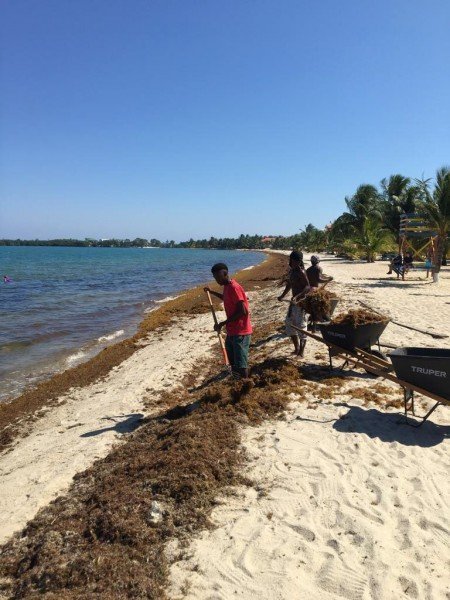
In late 2018, Cabinet approved a set of relief support mechanisms, including a four-month hotel tax relief for accommodations situated on the beach front, duty exemption facility for machinery and equipment imported to support clean-up efforts and containment of the sargassum, as well as a BZ $1.5 million dollars to support municipalities for beach clean-up. Based on the latter, the STF led the development of destination-level sargassum management plans that focus on a four-prong strategy of collection, containment, disposal, and awareness. To date, and since the installation of the STF, over 299 properties have benefitted from the Hotel Tax Relief, with an additional ten properties taking advantage of the Duty Exemption program for Sargassum Management Equipment. Additionally, the four hotspot areas have been integrated within a municipal relief mechanism being administered by the Belize Tourism Board. This relief support has seen the establishment of disposal sites within each area, and the designation of a municipal beach clean-up budget within each area, amounting to approximately BZ$500,000, collectively. The STF is also in the planning stage of a Boom Installation Pilot Test in San Pedro Town, to assess the effectiveness of these systems to protect beaches from Sargassum Influx. The technical team, led by the Department of Environment, Fisheries Department, and the Belize Port Authority, has been on the ground to assess critical environmental and logistical parameters.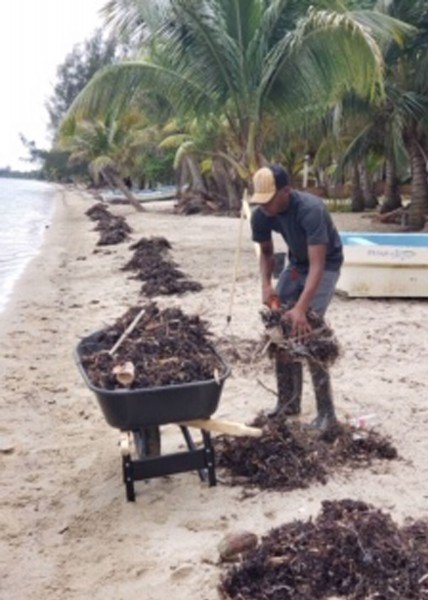
A campaign is expected to be launched shortly on social media to create awareness for stakeholders and tourists to be aware of what is being done and educate on best practices of how to collect, contain and dispose of the Sargassum. Lastly, the STF has worked with support from the Ministry of Tourism and Civil Aviation (MTCA), National Meteorological Service, the National Emergency Management Organization, and the Department of Civil Aviation in developing a sargassum drift projection system, with intentions to evolve this system into a full Forecasting System in 2019. These reports are issued every Wednesday, Thursday, and Friday along with local weather forecasts. The team continues to improve on the accuracy of Sargassum detection and drift forecasting with support from international satellite-based tools, and with a ground truthing mechanism being developed with Maya Island Air. Belize is poised to be one of the first countries in the region with a local forecasting system for sargassum.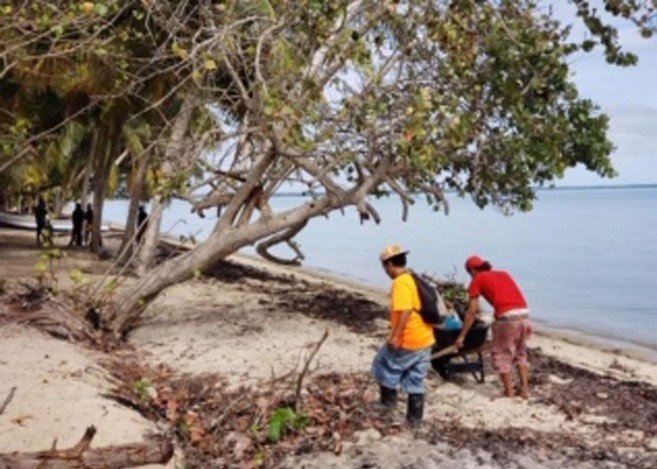
Belize Tourism Industry Association Executive Director John Burgos stated, “As the influx of sargassum continues to threaten our marine ecosystem and our tourism industry, the work of the Sargassum Task Force with the support of the Government of Belize remains paramount to the livelihood of Belizeans. The efficient removal of Sargassum is the best option available; we must continue to work hand-in-hand to find the best solutions available.” The MTCA, as chair of the STF, thanks its members and partners for its continued support and partnership in the management of Sargassum in Belize. It also thanks the invaluable support it has received from the local municipalities, tourism stakeholders, and most importantly, from the communities in the hotspot areas. The Task Force continues its work to develop a plan of action for the remainder of the 2019 season, and also on a long-term management mechanism for Sargassum, beyond the scope of tourism, as this phenomenon is projected to impact the region for the foreseeable future.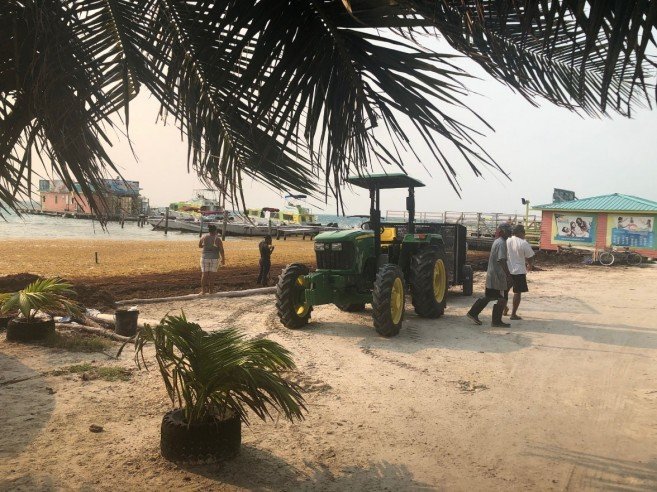
Here on Ambergris Caye, The San Pedro Town Council along with island businesses/organizations have been working arduously in finding solutions to deal with the massive accumulation of algae that threatens the tourism industry. The most common one is the daily clean-ups on the beach shore to avoid the massive accumulation of it.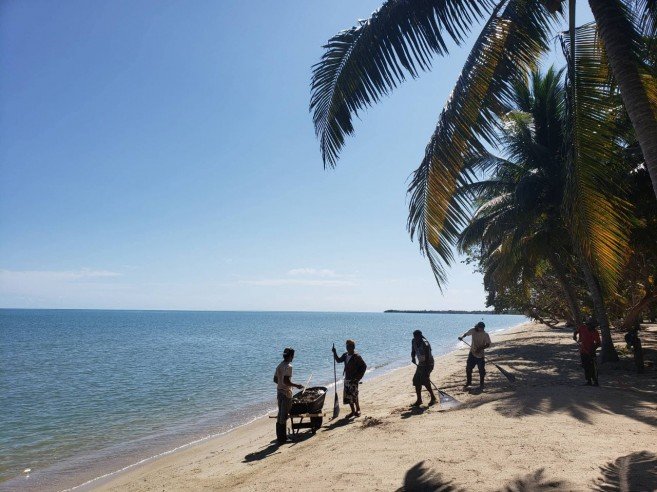
In seeking more solutions to combat this issue, on Friday, May 24th, island authorities and key stakeholders met with Mexican entrepreneur Omar Vasquez Sanchez, who presented a promising option to finally get Ambergris Caye and other areas of Belize rid of sargassum by using the algae to build houses. Sanchez, originally from the State of Jalisco, north of Mexico City, and raised in the United States, hosted a short presentation at El Divino Restaurant south of San Pedro Town about using sargassum to build houses. The Mexican entrepreneur, currently residing in the Mexican state of Quintana Roo, spoke about his masterpiece, a house he built entirely of sargassum bricks. Sanchez named the house ‘Angelita’ in honor of his mother.  According to him, this project will create jobs and make housing more affordable for low-income families. Sanchez also explained that to create sargassum building blocks, the method is like making adobe bricks. Water is used to wash the seaweed and make it stiff, and then it is put into brick molds. The bricks are then left out in the sun to dry for ten days. Sanchez further stated that it is 60% sargassum and 40% organic, and indicated that a house built with sargassum bricks will not be hazardous for anyone’s health and is strong enough to resist inclement weathers even in hurricanes.
According to him, this project will create jobs and make housing more affordable for low-income families. Sanchez also explained that to create sargassum building blocks, the method is like making adobe bricks. Water is used to wash the seaweed and make it stiff, and then it is put into brick molds. The bricks are then left out in the sun to dry for ten days. Sanchez further stated that it is 60% sargassum and 40% organic, and indicated that a house built with sargassum bricks will not be hazardous for anyone’s health and is strong enough to resist inclement weathers even in hurricanes.
Besides aesthetically unpleasant, the sargassum seaweed and the gases it emits as it rots along the shores has been proven to be hazardous to human health. Not only is it affecting the tourism industry and destroying marine life, but the seaweed can cause respiratory problems due to the high levels of toxic gases it omits when decaying. In the water, Sargassum can be harmless to humans, but once it lands on the beach and starts decomposing, it begins to release hydrogen sulfide gas or H2S. Colorless, poisonous and with an unpleasant rotten-egg odor, the H2S effect is based on how much is inhaled, and for how long. Exposure to very high concentrations can quickly lead to death. The common effects of inhaling low concentrations of hydrogen sulfide (10 ppm or less) are burning eyes, coughing, and shortness of breath. Repeated or prolonged exposure at low concentration levels can cause eye inflammation, headaches, fatigue, irritability, and insomnia. Exposure to moderate concentration levels of hydrogen sulfide can result in severe eye irritation, severe respiratory irritation (coughing, difficulty breathing, and fluid in lungs), headache, and nausea, vomiting, and imbalance. Effects of exposure to high levels (100 ppm or higher) of hydrogen sulfide can be serious and life-threatening with effects that include shock, convulsions, inability to breathe, rapid unconsciousness, coma, and even death.
This natural phenomenon, which affects the entire Caribbean, has been attributed to the overabundance of high nutrient levels in the ocean and the increased temperature of the water. This has been traced to the inappropriate disposal of industrial waste and agricultural runoff by developed countries, which causes the seaweed to thrive. The Sargassum that continues to plague Belize is believed to originate from South America, where nutrient-rich run-off from industries and agricultural fertilizers into the sea is taking place due to heavy deforestation. All this flow of nutrients into the sea makes it ideal for the rapid amassing of Sargassum. As the mats grow larger, currents take the seaweed to the Caribbean region, where the warm waters add to an even better environment for its survival and growth. This constant increase in its bloom has been recorded since 2014.
The Sargassum Task Force is comprised of the following Agencies: The Ministry of Tourism and Civil Aviation (Chair), the Belize Tourism Board, the Belize Tourism Industry Association, the Belize Hotel Association, the Department of Environment, the Belize Fisheries Department, the Ministry of Health, the National Meteorological Service of Belize, the National Emergency Management Organization, the Coastal Zone Management Authority Institute, the Belize Network of NGOs, the Belize Port of Authority, the respective Local Governments and numerous observers and partners.
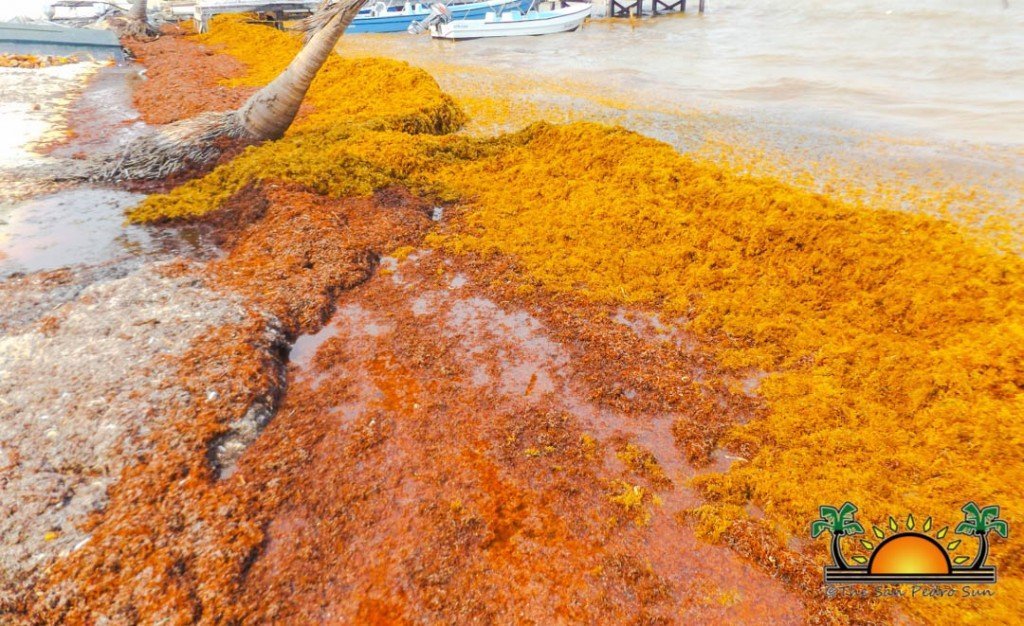
Share
Read more

